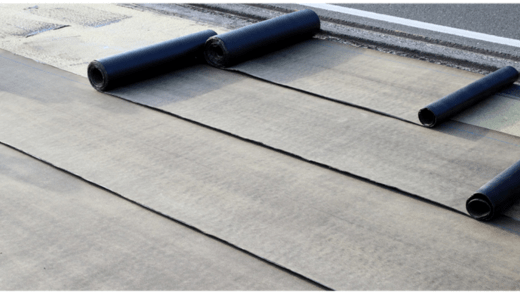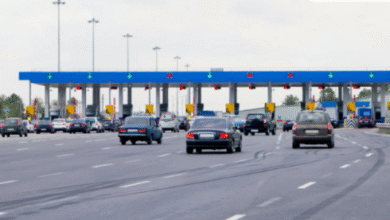Choosing the Right Commercial Roofing System: Key Factors to Consider

Selecting the appropriate roofing system for a commercial property is a critical decision that can impact the building’s longevity, energy efficiency, and overall value. The right choice not only protects the structure but also enhances its performance and sustainability. This article outlines key factors to consider when choosing a commercial roofing system, focusing on different roofing types and critical considerations for successful installation and maintenance.
Understanding Commercial Roofing Systems
Commercial roofing systems are specifically designed to meet the demands of large, flat or low-slope roofs commonly found in industrial and commercial buildings. These systems differ significantly from residential roofing in terms of material options, installation techniques, and durability requirements. Understanding the various types of commercial roofing systems available is crucial to making an informed decision.
1. Single-Ply Membranes
Single-ply membranes are a popular choice for commercial properties due to their flexibility and ease of installation. These include:
- Thermoplastic Olefin (TPO): Known for its reflective properties, TPO is highly energy-efficient and resistant to UV rays, making it suitable for buildings in sunny climates.
- Ethylene Propylene Diene Monomer (EPDM): A synthetic rubber roofing material that provides excellent durability and weather resistance. It is especially effective in areas with severe weather conditions.
- Polyvinyl Chloride (PVC): A durable, heat-welded roofing system that offers strong resistance to chemicals and punctures. PVC is ideal for buildings with high foot traffic or potential chemical exposure.
2. Built-Up Roofing (BUR)
Built-Up Roofing (BUR) systems are traditional roofing solutions composed of multiple layers of asphalt and reinforcing fabrics. BUR systems provide a high level of durability and are known for their excellent waterproofing capabilities. These systems are particularly well-suited for roofs with complex shapes or those exposed to harsh environmental conditions.
3. Modified Bitumen Roofing
Modified bitumen roofing involves applying asphalt with additives to enhance its performance. It is typically installed in multiple layers, providing robust protection against leaks and extreme temperatures. This system is favored for its flexibility and ease of repair.
4. Metal Roofing
Metal roofing systems, such as standing seam or corrugated metal, offer exceptional longevity and strength. These systems are resistant to fire, wind, and impact, making them suitable for a variety of commercial applications. Additionally, metal roofs are highly recyclable, contributing to their sustainability.
Key Factors to Consider
When selecting a commercial roofing system, several factors must be taken into account to ensure optimal performance and cost-effectiveness.
1. Building Structure and Design
The design and structure of the building play a significant role in determining the most suitable roofing system. For instance, flat or low-slope roofs often require different materials compared to pitched roofs. It is essential to consider the roof’s slope, load-bearing capacity, and potential for drainage issues when choosing a roofing system.
2. Climate and Weather Conditions
Local climate and weather conditions greatly influence the choice of roofing material. For buildings in regions with high UV exposure, reflective and heat-resistant materials like TPO or PVC are ideal. In contrast, areas prone to heavy rainfall or snow may benefit from the waterproofing and insulation properties of BUR or EPDM systems.
3. Energy Efficiency
Energy efficiency is a critical consideration for modern commercial roofing systems. Reflective roofing materials can reduce cooling costs by minimizing heat absorption. Additionally, some systems offer enhanced insulation properties, which can contribute to overall energy savings by regulating indoor temperatures more effectively.
4. Durability and Maintenance
The durability of the roofing material impacts the long-term costs and performance of the system. It is important to select a material that can withstand environmental stresses and require minimal maintenance. Metal roofs and single-ply membranes often provide superior durability and low maintenance requirements compared to traditional asphalt systems.
5. Cost and Budget
Cost is a significant factor when choosing a commercial roofing system. While initial installation costs vary among different materials, it is important to consider the long-term value, including maintenance and potential repair expenses. A more expensive roofing system with higher durability may offer better cost efficiency over time compared to cheaper, less durable options.
6. Compliance and Regulations
Ensure that the chosen roofing system complies with local building codes and regulations. Some regions have specific requirements for roofing materials, especially in terms of fire resistance and energy efficiency. Verify that the selected system meets all necessary standards to avoid potential legal and safety issues.
Conclusion
Choosing the right commercial roofing system involves a comprehensive evaluation of various factors, including roofing types, building structure, climate, energy efficiency, durability, cost, and regulatory compliance. By understanding these key considerations and selecting a system that aligns with the specific needs of the property, building owners can ensure long-term performance and protection for their commercial investments. Collaborating with experienced roofing professionals can also provide valuable insights and support in making the best decision for your commercial roofing needs.




